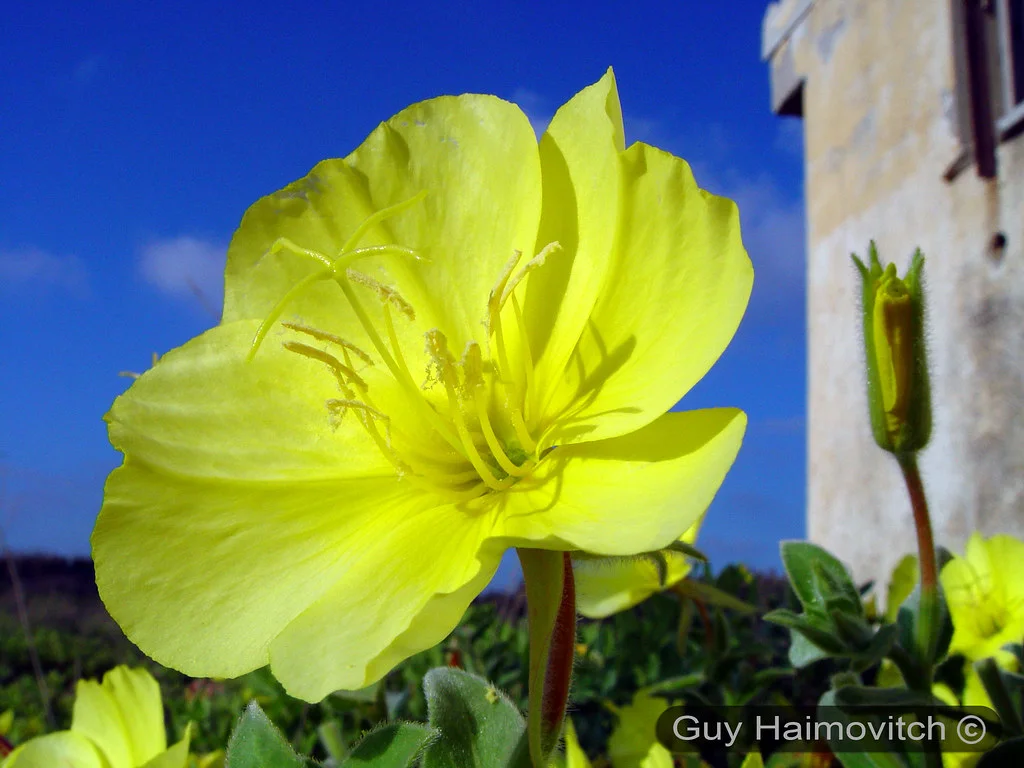Photo by Guy Haimovitch licensed under CC BY-ND 2.0.
Plants, like all living organisms, must be able to sense and respond to their environment. The more we look at these sessile organisms, the more we realize that plants are far from static in their day to day lives. Recent evidence even suggests that some plants may be able to “hear” their pollinators and react accordingly.
I place the word “hear” in quotes because I want to make sure that we are not talking about hearing in an animalistic sense. Plants do not have ears, a nervous system, or anything like a central processing unit to make sense of such stimuli. What they do have are mechanoreceptors that can sense vibrations and those are what are likely at work in this example.
The beach evening primrose (Oenothera drummondii) is native to southeastern North America. It is pollinated by bees during the day and by moths at night. Like most members of its genus, O. drummondii produces relatively large, showy flowers. That doesn’t mean it steals all of the attention though. Competition for pollinators can be stiff among flowering plants. To sweeten the deal a bit, O. drummondii also produces a fair amount of nectar.
Nectar is costly for plants to produce and maintain. Not only does it take water and carbohydrates away from the rest of the plant, it also puts the reproductive structures at risk of degradation by microbes feeding on sugars as well as nectar thieves who end up drinking the nectar without pollinating the flower. It stands to reason that a plant that can modulate the quality of its nectar reward in response to pollinator availability could potentially increase its fitness. If the plant doesn’t always have to present sugar-rich nectar then why bother? It appears that selective nectar production is exactly the strategy O. drummondii employs.
Photo by Yu-Ju Chang licensed under CC BY-ND 2.0.
Researchers have discovered that individual O. drummondii flowers can rapidly increase the sugar content of their nectar after being exposed to the sound of a visiting bee. Within 3 minutes of being exposed to playbacks of bee wings, the flowers of O. dummondii increased the sugar content of their nectar by 20%. What’s more, flowers that had sensed the vibrations and increased their sugar content were more likely to be visited by bees. This is because bees are really good at sensing the sugar content of nectar.
This is pretty remarkable. Not only does this enable the plant to respond to the availability of pollinators and reduce the chances of nectar spoilage and theft, it significantly increases their chances of pollination. The fact that the response is so rapid (~3 mins) likely stems from the foraging habits of bees, who prefer to limit the amount of time between floral visits. Thus, the faster the plant can respond, the more likely that bees are willing to stick around and visit more flowers.
In terms of a mechanism, researchers believe the flower itself is the main sensory organ involved in the response. As mentioned, plants do produce mechanoreceptor proteins, which can sense physical vibrations. The presence of these proteins within the petals likely plays a role in sensing bee vibrations. Moreover, the bowl-shape of the flower itself may be under some selective pressures that favor the ability of the flower to sense its pollinators. More work is needed to better understand exactly how the signal pathways play out. Also, the question remains as to how wide spread this phenomenon is and how it differs between different plants and floral shapes.
Further Reading: [1]

